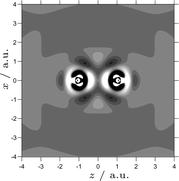Exchange methods in Kohn–Sham theory
Abstract
Differences between exchange methods in exchange-only Kohn–Sham theory are highlighted by calculations of diatomic molecule total energies, uncoupled isotropic

* Corresponding authors
a
Department of Chemistry, University of Durham, South Road, Durham, UK
E-mail:
D.J.Tozer@Durham.ac.uk
Fax: +44 191 384 4737
Differences between exchange methods in exchange-only Kohn–Sham theory are highlighted by calculations of diatomic molecule total energies, uncoupled isotropic

 Please wait while we load your content...
Something went wrong. Try again?
Please wait while we load your content...
Something went wrong. Try again?
A. M. Teale and D. J. Tozer, Phys. Chem. Chem. Phys., 2005, 7, 2991 DOI: 10.1039/B506082F
To request permission to reproduce material from this article, please go to the Copyright Clearance Center request page.
If you are an author contributing to an RSC publication, you do not need to request permission provided correct acknowledgement is given.
If you are the author of this article, you do not need to request permission to reproduce figures and diagrams provided correct acknowledgement is given. If you want to reproduce the whole article in a third-party publication (excluding your thesis/dissertation for which permission is not required) please go to the Copyright Clearance Center request page.
Read more about how to correctly acknowledge RSC content.
 Fetching data from CrossRef.
Fetching data from CrossRef.
This may take some time to load.
Loading related content
